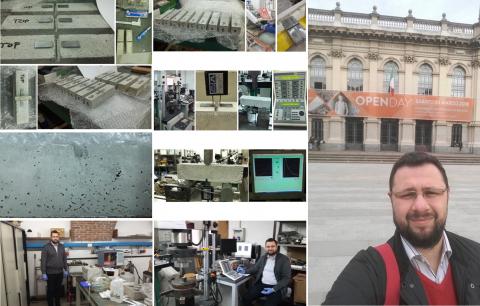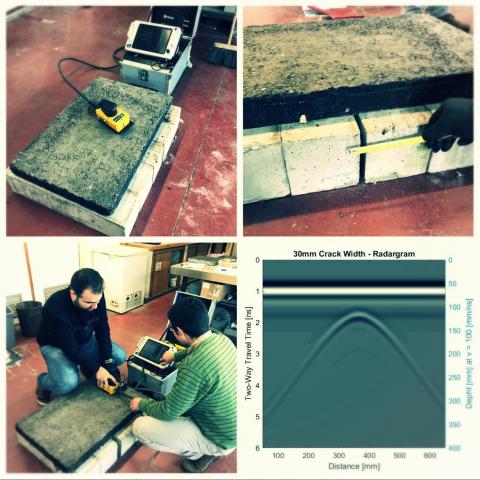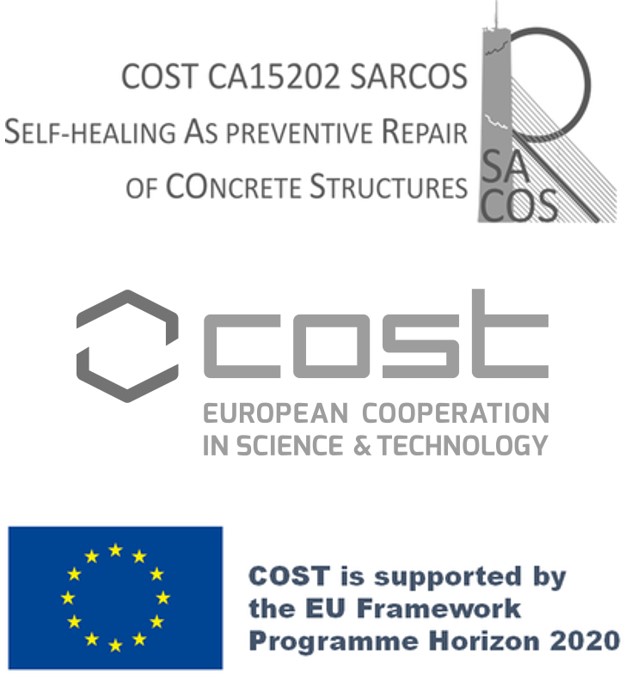Awarded STSMs
| CALL 6.0
Applicant: Dr Bojan Miljevic, Faculty of Technology, University of Novi Sad, Novi Sad (RS)
STSM Topic: Characterization and monitoring of the crack self-healing ability of bio-mortar
Host: Liberato Ferrara, Politecnico di Milano, Milan (IT)
Period: 12/03/2018 to 23/03/2018
Work Plan Summary:
The purpose of this STSM was to perform the relevant evaluation methods to monitor and characterize the
healing ability of a newly developed polymer encapsulated bacteria-based agent applied into the old
cement-based mortar structures with the micro-cracks of controlled dimensions. The second purpose was
focused on monitoring and characterization of self-healing ability of newly prepared (fresh) mortar
composite based on same raw material composition as the first one but firstly mixed with bacteria
encapsulated in polymers. For both approaches, there was a need of designing standard cracks and use
of standard monitoring tests of the material properties. In that sense, the methodology and laboratory
equipment infrastructure of the Department of Civil and Environmental Engineering at Politecnico di Milano
(group of Prof. Ferrara) was used. Another objective of the STSM was that grantee use the opportunity to
gain knowledge about the healing ability testing methods developed within the group of Prof. Ferrara. One
of the scientifically relevant goals of this STSM was to compare the obtained results of self-healing
capabilities of newly developed bio-mortar with those of the proposed bacteria-based external healing
method for repairing of existing cracked mortar

Applicant: Mezgeen Rasol, Polytechnic University of Catalonia, Barcelona (ES)
STSM Topic: Identification of Cracking in Cement Concrete Using Ground Penetrating Radar
Host: Jorge Pais, University of Minho, Guimarães (PT)
Period: 12/03/2018 to 31/03/2018
Work Plan Summary:
This STSM contributed for Working Group 2, by analysing and evaluating different characterization techniques to quantify the cracking in cement concrete elements in term of depth and width by using non-destructive screening and monitoring method (Ground Penetrating Radar). Cracking in road pavements in both type of materials (asphalt or cement concrete) is one of the most frequent phenomena that occur due to deformation of the pavement or its deterioration caused by several factors, such as daily use of heavy load trucks, materials weathering and climacteric agents such as snow and rain [1,2,3]. When cracks occur in cement concrete layers, which are generally below a more flexible bituminous layer, they are not immediately visible because the crack still has to propagate to the upper bituminous layer and cross it (effectively cracking the bituminous pavement). Traditionally the rehabilitation and maintenance of the concrete layer below a bituminous pavement layer was more complicated due to the traditional destructive methods to find the cracks, requiring the removal of large areas of bituminous pavement, and that the rehabilitation of flexible layers is generally carried out by putting an overlay without caring to understand the cause and/or of the surface cracks. Nowadays, several methods for the survey and evaluation of the cement concrete cracking were developed. Non-destructive methods are preferred due to their capacity in detecting without damaging the structure. Several techniques exist, mostly based in the transmission of mechanical or electromagnetic wave. For this work, Ground Penetrating Radar (GPR) was the natural choice for the non-instructive method to be used in this study. The main reasons are due to the fact that GPR has been used for decades in the study and assessment of road layers of multiple materials and because of its high resolution, which allows it to be particularly effective in detecting small discontinuities, such as cracks. Thus, this work tries to assess the capability of this system for the identification of the crack width and depth in cement concrete layers.



